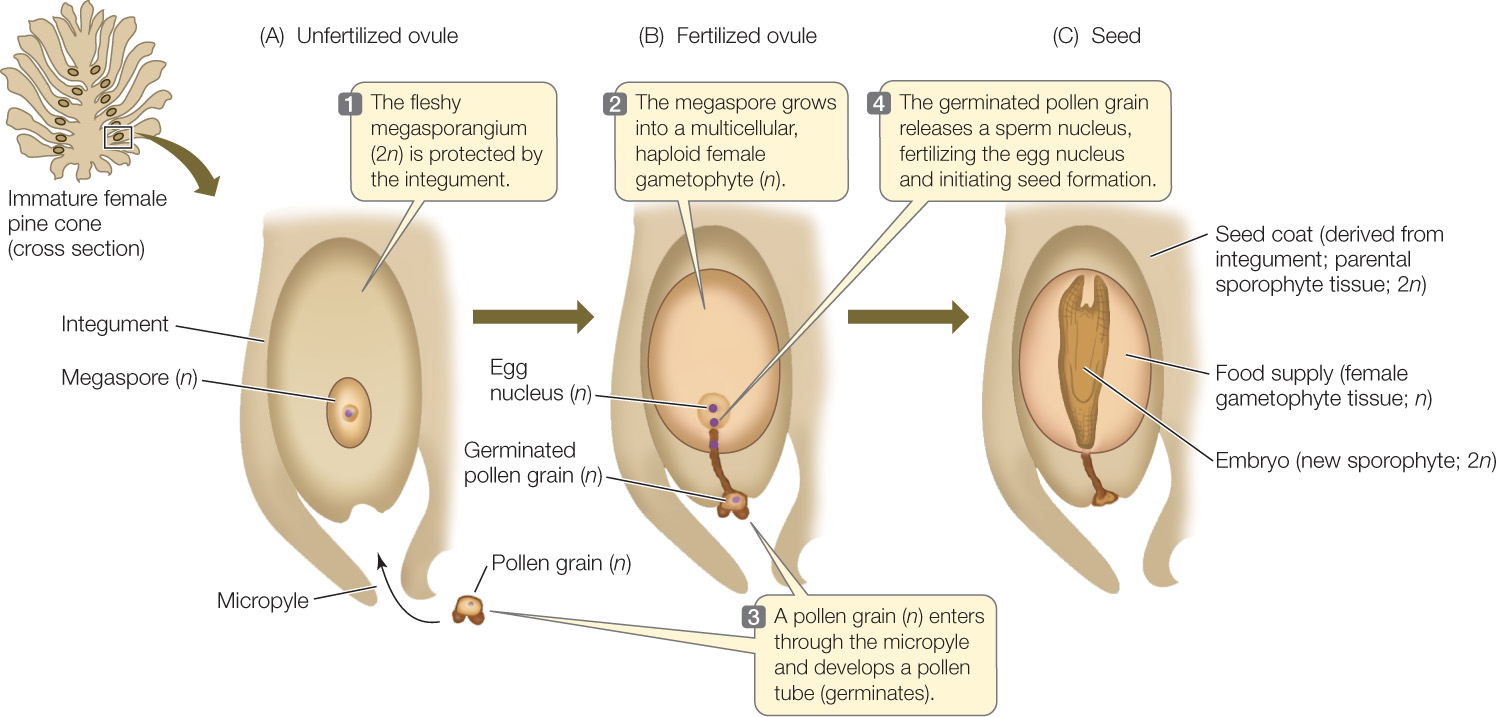
Figure 21.15: A Seed Develops These cross sections diagram the development of the ovule into a seed in a gymnosperm (Pinus sp.). Angiosperm seed development has differences (e.g., angiosperm integuments have two layers rather than one, and the angiosperm embryo is nourished by specialized tissue called endosperm) but follows the same general steps. (A) The haploid megaspore is nourished by tissues of the parental sporophyte (the diploid megasporangium). (B) The mature megaspore is fertilized by a pollen grain that penetrates the integument, germinates (grows a pollen tube), and releases a sperm nucleus. (C) Fertilization initiates production of a seed. A mature seed contains three generations: a diploid embryo (the new sporophyte), which is surrounded by haploid female gametophyte tissue that supplies nutrition, which is in turn surrounded by the seed coat (diploid parental sporophyte tissue).